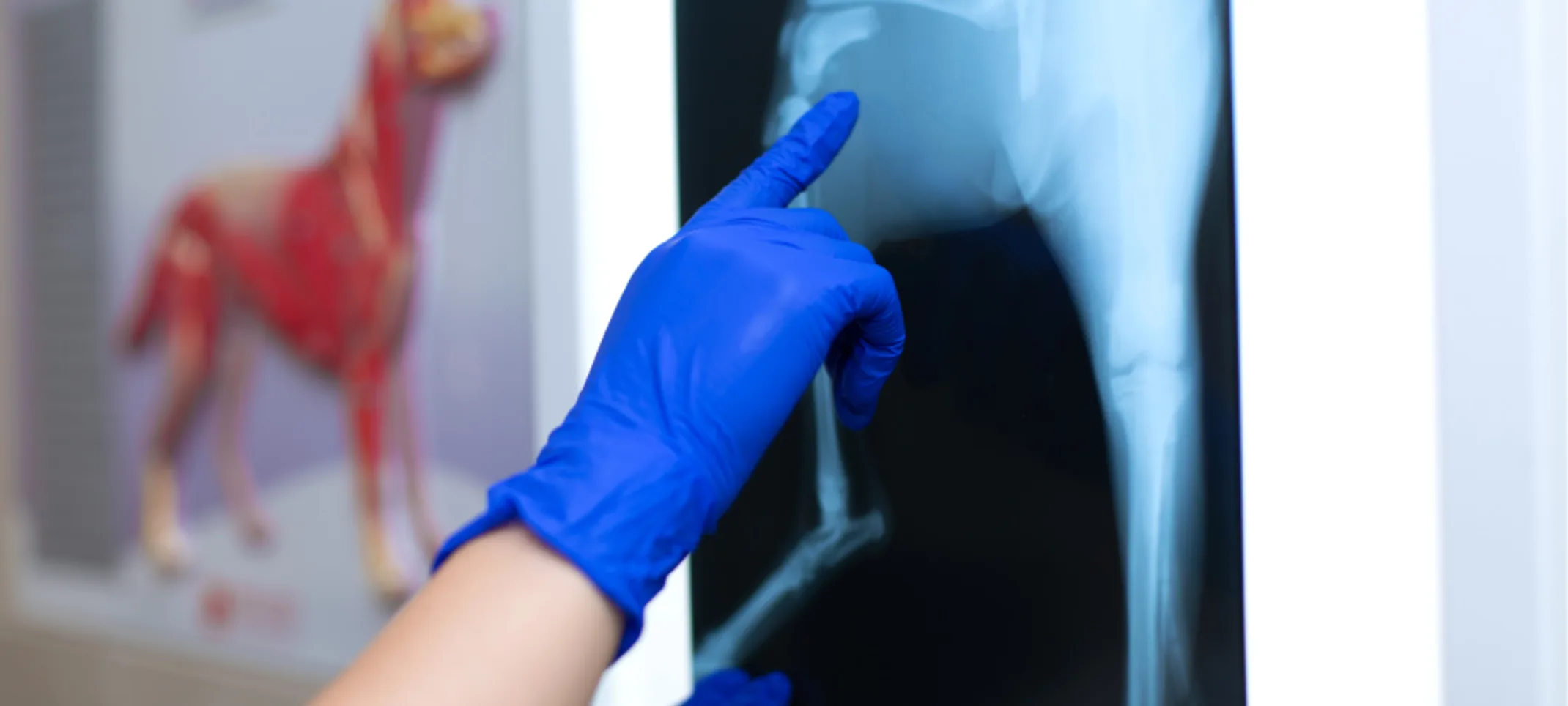Mansfield Animal Clinic
Digital Radiology
We’re equipped to perform routine radiography services to identify many types of illness or injury when pets are sick or suffer a trauma.

Mansfield Digital Radiology
Seeing Inside Your Pet
Mansfield Animal Clinic uses digital radiological imaging to provide the highest quality, fastest results for your pet. We use X-ray imaging and ultrasound technology to see what’s going on inside your pet. A regular physical exam can only help us see so much, so if we suspect that your pet has some kind of internal injury, like a broken bone, or has swallowed something they shouldn’t have, we may order some kind of imaging to help us diagnose what’s ailing your pet.
Overview
Radiography, also known as X-rays, is one of the most common and valuable medical diagnostic tools. X-rays are highly useful for screening areas of the body that have contrasting tissue densities, or when evaluating solid tissues.
Digital Radiology
Our Mansfield veterinary professionals employ digital radiology to get the best images of your pet’s bones and organs. Digital radiology is the latest in radiological imaging and provides detailed images, fast.
Other benefits of digital radiology:
Reduced radiation exposure compared to analog technologies
Enhanced image quality
No need to wait for film to develop
Digital radiology enables us to get the highest quality images of your pet’s bones and organs, which means we’ll be able to spot what’s ailing your pet more easily. This means that we’ll be able to diagnose and then treat your pet more quickly than we may have been able to with traditional radiological imaging tools.
X-Rays & Ultrasounds
We use both X-rays and ultrasounds to see into your pet’s body, beyond your pet’s fur. We are able to see bones and organs, depending on which method we use to take images of your pet’s insides. We use X-rays to take images of your pet’s bones and other dense tissues, like tendons and muscles.
Ultrasounds are used to take images of soft tissues, like organs and veins. We also use ultrasounds to detect and monitor pregnancy – just like humans!
Both of these methods are completely painless and non-invasive. Our Mansfield veterinary team will make sure that your pet is calm and comfortable throughout the imaging process.
Why would my pet need X-rays?
If your pet is sick or has suffered a trauma, X-rays provide a minimally invasive tool to help our doctors diagnose your pet. X-rays are also used in general wellness exams to diagnose potential problems before they become serious.
When is X-ray testing appropriate?
We may recommend veterinary X-rays as part of a diagnostic procedure if your pet is experiencing any health conditions or as a preventive measure in a routine senior wellness examination. We use radiology alone or in conjunction with other diagnostic tools depending on the patient’s condition. We’re fully equipped to perform routine radiology services to identify many types of illness or injury when pets are sick or suffer a trauma.
How is X-ray testing used?
X-rays can be used to detect a variety of ailments in animals including arthritis, tumors, bladder and kidney stones, and lung abnormalities such as pneumonia. They are also used to evaluate bone damage, the gastrointestinal tract, respiratory tract, genitourinary system, organ integrity, and even identify foreign objects that may have been ingested. Dental radiographs help distinguish healthy teeth from those that may need to be extracted, and identify any abnormalities beneath the gums including root damage, tumors, and abscesses. In some cases, we may need to sedate your pet or use short-acting general anesthesia.
X-Ray Technology
X-rays use a low dose of radiation to take still pictures of your pet’s bone and muscle. Because X-rays take still images, we may have to lightly sedate your pet in order to keep them still enough for a clear image. We use X-rays to diagnose traumatic injuries, to find foreign objects, and to identify tumors, among other uses.
Ultrasound Technology
Ultrasounds use high-frequency soundwaves to generate real-time images of your pet’s organs. Because ultrasounds produce real-time, moving images, we do not need to sedate your pet in order to get a clear image. Additionally, because ultrasounds do not use radiation, they are safe for use in monitoring fetal development.
